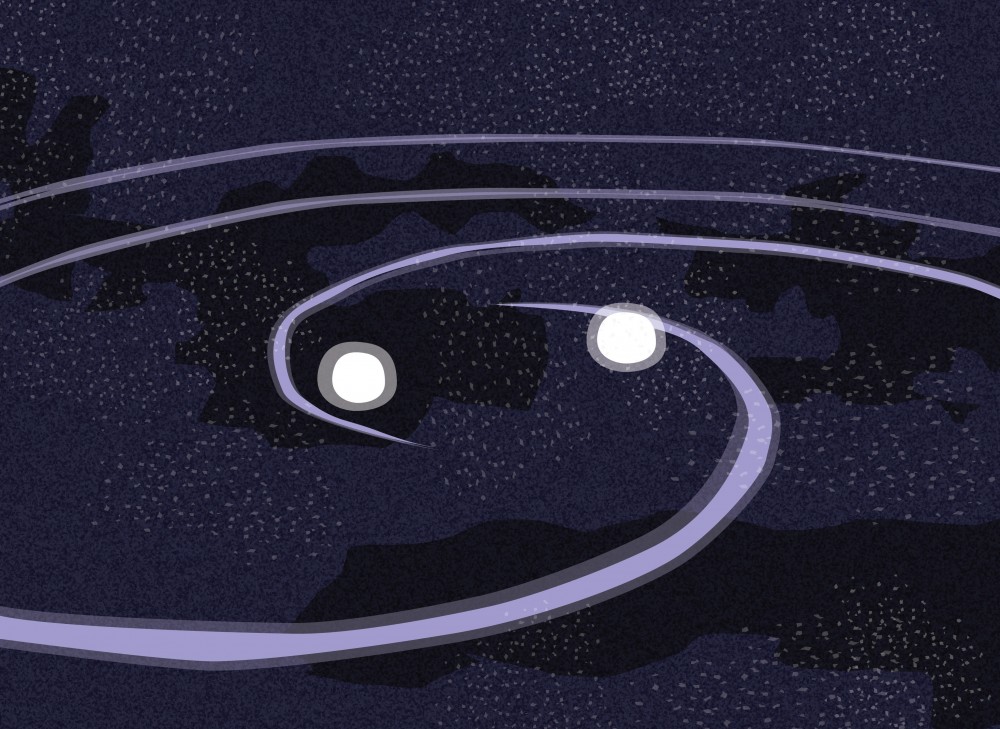In July 1670, astronomers and observers witnessed an explosion – a bright object appeared in the sky, only to fluctuate in intensity before fading away two years later. They believed the spectacle to be the creation of a new star.
Instead, an international collaboration involving two University of Minnesota researchers and an observatory in Chile released Monday found the 350-year-old event was likely a much more rare event: the merger of a brown dwarf and a white dwarf star.
“Though initially visible with the naked eye, this burst of cosmic light quickly faded and now requires powerful telescopes to see the remains of this merger: a dim central star surrounded by a halo of glowing material flowing away from it,” according to the observatory’s website.
The star, called CK Vulpeculae, was previously believed to be a nova. A nova is an explosive hydrogen fusion event from the surface of a white dwarf, according to Charles Woodward, a researcher on the project and a professor at the University’s Minnesota Institute for Astrophysics.
A brown dwarf is sometimes called a “failed star,” said Terry Jones, a professor of astronomy and astrophysics at the University.
“It’s basically a star that never made it,” Jones said. “It’s not massive enough to be like the sun.”
On the other end, a white dwarf is what remains after a star lives out its life.
“That’s what the sun will eventually end up as – a white dwarf,” Jones said.
The project abstract states that the researchers believe the stars merged between 1670 and 1672, with the observed structures emerging in the aftermath. The debris took the form of an hourglass with a “compact central object” in the middle. By studying this, researchers were able to conclude the explosion was not a nova, as was thought for the past 350 years.
“A nova explosion like that would not be visible after 300 years,” said Robert Gehrz, a professor at the University’s School of Physics and Astronomy and a co-researcher on the project. “We think it was a much more violent explosion.”
Using the Atacama Large Millimeter/submillimeter Array located in Chile, researchers from around the world observed the debris of the explosion, including dust and gas. From that, they studied the structure of the dust distribution, the history of the mass and the mass of dust itself.
ALMA, located in the Atacama Desert of northern Chile, consists of 66 radio telescopes at an elevation of 16,000 feet. It is currently the largest radio telescope in the world. The high elevation and low humidity of the Chajnantor plateau helps reduce noise and signal disturbances.
The findings of the project will likely be studied for decades to come, Woodward said.
“This has been one of our targets that we’ve been trying different experiments on for about 10 years,” he said. “And it’s not over yet.”
The researchers said events like this star collision can reveal insight into cosmic beginnings.
“Explosions like this are … the origin of some of the chemicals that are in your body,” Gehrz said.








